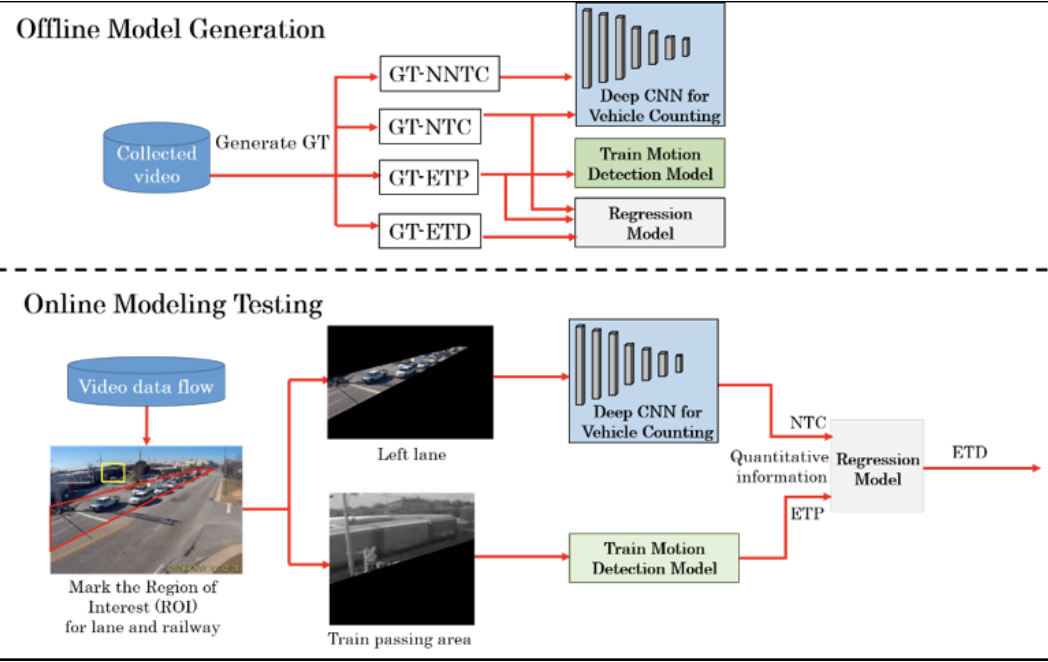- Home
- Data Analytics
Data Analytics
Massive Computational Data Analytics


iMSEL has developed a framework to extract flow feature from massive dynamic computational data based on proper orthogonal decomposition (POD) and feature mining techniques for targeted visualization and learning. Two key elements in the feature extraction procedure are described including (1) the POD to reduce data dimensions and to decouple the time-averaged and time-varying flow structures in high-fidelity Computational Fluid Dynamics (CFD) data within non-uniform grids; and (2) the feature mining, including clustering-based data mining, filtering, and aggregation to detect both mean and unsteady flow features as well as to identify the region of interest (ROI). The rationale and benefits of combining both elements for fast scalable feature extraction are discussed. Case studies of vortex extraction are undertaken to validate the present approach. The POD accurately captures the characteristic flow structures embedded in the data and provides useful insight into the underlying flow phenomena. The feature mining module in our tool is capable of identifying key features in the ROI (3-10% of the original data) for focused visualization, discovery, and learning.
Real-time Data Analytics
The ability to accurately identify the dependence of flight external loads (forces and moments) on flight condition, dynamic and control states using data from various sources (such as flight test, physics-based models of varying fidelity levels) and to rapidly predict them at test points yet to be flown is essential for developing high-performance, safe, aircrafts and aerospace vehicles with reduced cost and cycle. iMSEL has been developing an integrated software tool based on surrogate models for real-time analysis and prediction of combined static and dynamic external loads using non-proprietary physics-based models and existing flight-test data. Our preliminary study established the proof of concept that the technology can be used to accurately analyze flight test data (5% uncertainty in flight load prediction) for a variety of maneuvers at the real-time rate and to elucidate primary load-driving factors out of complex nonlinear flight load behaviors. The software will be integrated with USAF designated real-time control room environment to automate the entire flight data analysis work flow in AFTC environment.

Machine Learning and Computer Vision
Field-deployable Automated Target Recognition

The need for next-generation multi-int sensing and machine learning (ML) framework for threat target detection and characterization is widely recognized. Innovative solutions rooted in data science and computation based signal processing, including artificial intelligence (AI) and machine learning (ML) offer the promise to overcome many of these critical challenges. Recent advances of AI and ML demonstrated unprecedented potential for automated characterization, monitoring, and identification of objects/targets with distinct behavior from the surroundings. iMSEL has been developing an integrated fieldable ATR system (including both software & hardware) based on deep learning for deploying and testing classifier models obtained by Convolution Neural Network on a low-end computing platform (RaspberryPi 3). CNN-based ATR has been applied to the whole image including a single or multiple vehicles. The classifier is not only able to correctly infer the type of vehicle but detect the presence of a wheel. The automatic target classification within the region of interest (ROI) for video frames has also been developed and demonstrated. Although in a high-clutter environment (graffiti, shrubbery), our prototype ATR system can still fully recognize each visible segment of the passing truck, even with significant target overlap, and the online classification process only takes sub-second. This case study verifies that the optimized detector can produce reasonably fast and accurate recognition even on extremely resource-constrained systems.
Intelligent Traffic Assessment and Sharing System

Develop a deep learning-assisted framework and a differential strategy for decongestion time prediction at railroad grade crossings
Challenges
•Insufficient congestion events data
•End-to-end deep learning is infeasible
•Quantify visual information for engineering model
•Resource-limited edge computing




